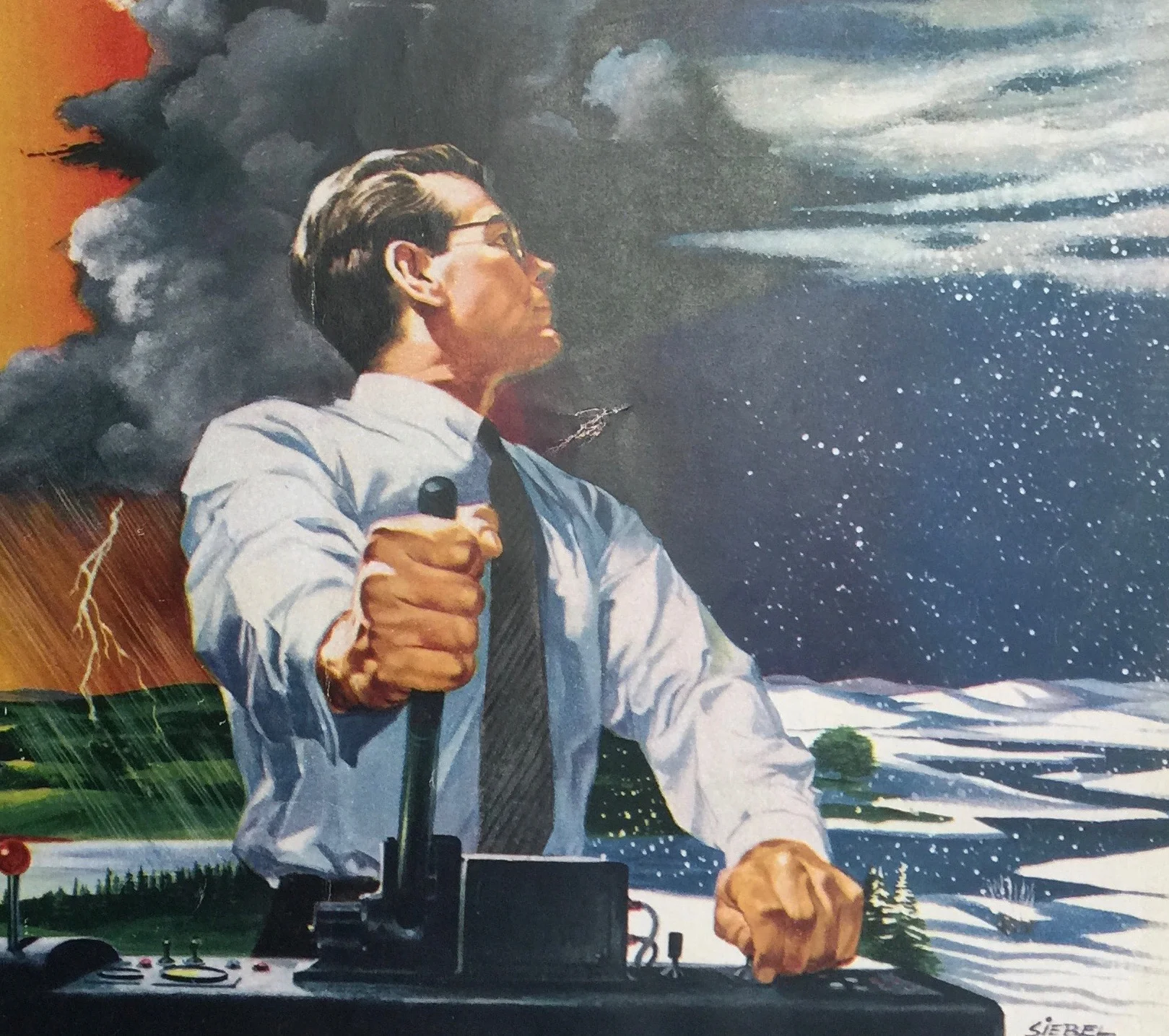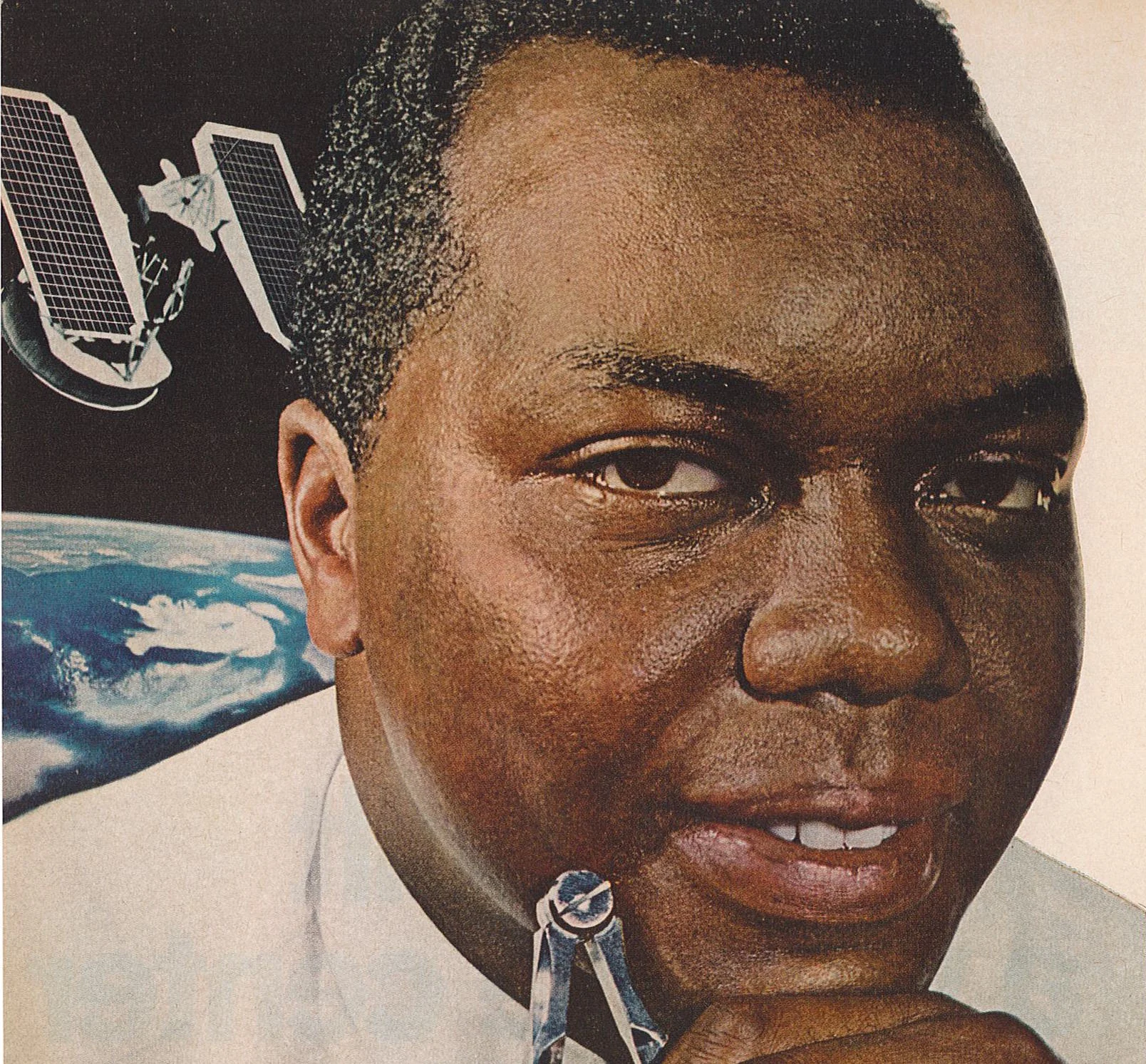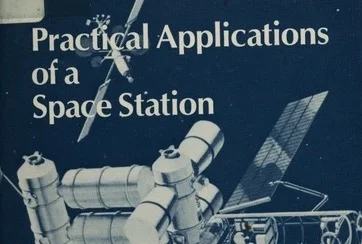NPOESS Activity Book, 2007
Erica Handlemann and Jane Whitcomb, NPOESS Activity Book (Department of Defense, Department of Commerce, and NASA. March 2007).
Sometimes public outreach takes strange forms. I ran across this children’s activity booklet at an exhibit booth during the 2008 American Meteorological Society Meeting. It was meant to introduce kids to NPOESS, an environmental satellite system under development.
Kids could color in a picture of NPOESS sensing clouds, volcanic smoke, and noticing a ship in distress at sea. They could decide which picture of NPOESS was different from the others, or connect the dots to “find out what is detecting the Earth’s weather patterns” (surprise, it’s NPOESS!). Other activities included a word search, a crossword puzzle, a word jumble, a maze, a picture for coloring, and a cryptogram. The age-appropriateness varies wildly from one activity to the next, and rough hand-drawn sketches and clip art graphics make the booklet look more homemade than professional. NOAA has never spent the kind of serious money on public outreach (or history) that NASA does.
But it’s the introductory text that really revealed the depths of NPOESS’s problems. NPOESS had been initiated in 1994, when the Clinton Administration tried to “capture the peace dividend” after the Cold War by directing the Department of Defense and NOAA to converge two parallel weather satellite programs. By 2007, government managers and private engineers from Northrup Grumman were struggling to salvage a failing, multi-billion dollar program that hadn’t produced a satellite. The booklet manages to simultaneously present NPOESS as almost an accomplished fact, and reveal the confusion and lack of focus that was killing the program.
It begins inanely enough:
“There is a saying in New England that goes, ‘If you don’t like the weather, just wait an hour and it will change.’ While this is a bit of an exaggeration on most days there, the weather does change.” (Wait, the weather changes?) “But more than just the weather, the environment in which we live is also changing.” (They would say “global warming,” but can’t because the Bush administration. And NPOESS’s key climate monitoring instruments had been abandoned in 2006.)
Next, kids get to learn what weather satellites do:
“Satellites, circling over 800 kilometers above the earth, help us to detect and monitor weather changes; not just the changes we see daily, but also the less obvious changes to our environment. The National Polar-orbiting Operational Environmental Satellite System (NPOESS) is the future system that will provide this data.”
But we can’t let the kids miss the real challenge here, which is intra-agency cooperation:
“NPOESS is a joint effort between the Department of Defense, the Department of Commerce, the National Oceanic and Atmospheric Administration (NOAA), and the National Aeronautics and Space Administration (NASA). These three government agencies have come to work together to create the next-generation weather satellite system.” (Three agencies, one mission?? Tell me more, Dad!)
And it’s gonna be great!
“This future satellite system will remotely sense the environment from space. It will obtain a lot more information than the current satellites and be able to transmit that information much quicker than ever before.” (More data faster? That’s better than ice cream!)
The Obama administration announced the end of NPOESS on February 1st, 2010. The expected cost had more than doubled from $6.5 billion, and the timeline had slipped by years. A postmortem report blamed a range of factors, including “the divergent missions of the agencies involved, a dysfunctional management structure, poor contractor oversight, inexperience among government program managers and unrealistic cost and schedule estimates, among other reasons,” according to Space News. The report also noted that NPOESS had been championed by Al Gore in 1994, and thus had no strong advocates during the second Bush administration.
Learn More:
· Government Accountability Office, “Polar-Orbiting Operational Environmental Satellites: Restructuring Is Under Way, but Challenges and Risks Remain,” Congressional Testimony, June 7, 2007.
· Turner Brinton, “White House Dissolves NPOESS Partnership in Blow to Northrop,” Space News (February 2, 2010)
· “US Weather Satellites: From NPOESS’ Hairy Crises, to DWSS/ JPSS Split Ends,” Defense Industry Daily, August 26, 2013.
Image Source:
Erica Handlemann and Jane Whitcomb, NPOESS Activity Book (Department of Defense, Department of Commerce, and NASA. March 2007).








